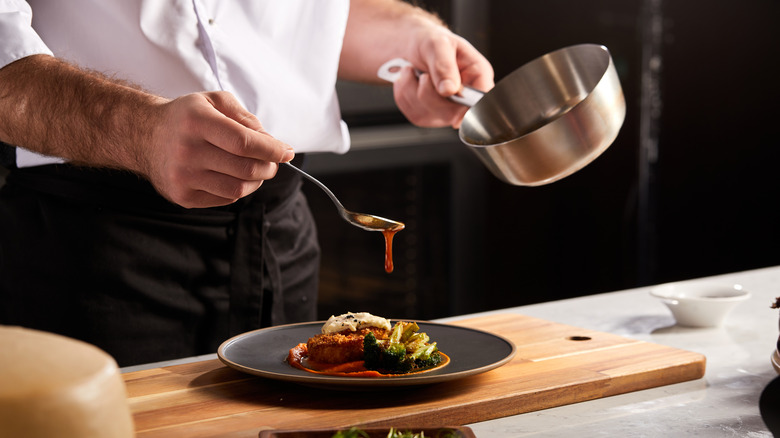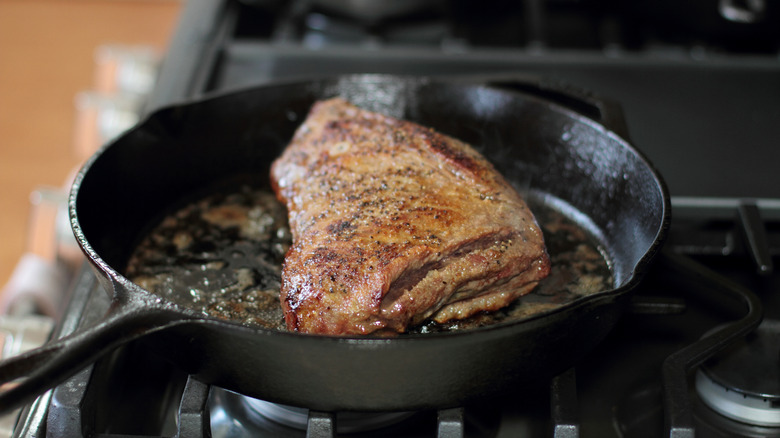The Restaurant Cooking Technique Chefs Want You To Use At Home
As home cooks, we have it easy compared to chefs in a professional kitchen. We can cook at our leisure without the grueling pace or an executive chef breathing down our neck à la Gordon Ramsay. Perhaps you even cook with a cocktail or glass of wine in hand because cooking is your hobby. It's something you enjoy doing – no need to stress. But that doesn't mean we shouldn't employ some proper chef habits and techniques in our own kitchens.
One habit to get into is to get your Mise en Place, well, in place. Even though you're at home and there's no pressure, and it might seem like you're just delaying cooking by chopping and dicing – and you don't want to do all those extra dishes – the payoff is worth it. Mise en Place, or preparing your ingredients ahead of time, makes the actual cooking a breeze instead of letting your onions burn because you forgot to chop the celery. You won't miss or duplicate any steps and you can focus on creating a delicious meal for you and your family and friends. Mise en Place is how professional kitchens run with (minimal) hiccups so diners can have prompt, professional service. If you don't already put your Mise en Place, it's a great habit to get into.
Another technique chefs would like to see you get more comfortable with is a multi-step cooking process – using both your stovetop and your oven.
Don't be afraid to go from stovetop to oven or vice versa when cooking at home
While it may seem like an extra step, two-step or two-level cooking is how most restaurant kitchens operate (via Well + Good). A great example of this process working in your favor is a breaded chicken cutlet. By the time the chicken is cooked through, your breadcrumb coating won't be golden brown anymore, it'll be on its way to burnt. So the best way to ensure an even cook inside and outside is by throwing the mostly-cooked meat into the oven to finish. Starting skin-on chicken or a steak in a skillet starts the Maillard reaction which gets enhanced in the oven. The meat cooks through more evenly and there's less of a chance of it drying out (via My Recipes). You also have the added bonus of freeing up a burner so you can steam some vegetables or even take a sip of your wine.
You might already be doing two-step or two-level cooking without even realizing it. Searing short ribs before covering them in a red wine sauce and putting them in the oven to braise is already a two-step process. The same is also true for reverse searing a steak, bringing it up to temp in an oven, and searing it on the stove before resting and slicing. If you're prepared to experiment with the process, make sure you're using oven-safe pans, like stainless steel or cast iron, and check what temperature they're safe to.

